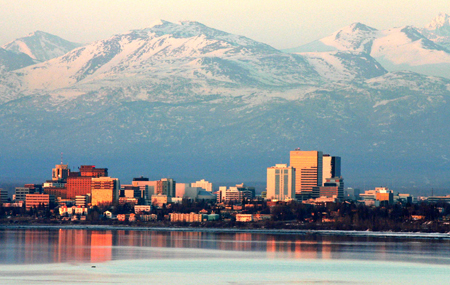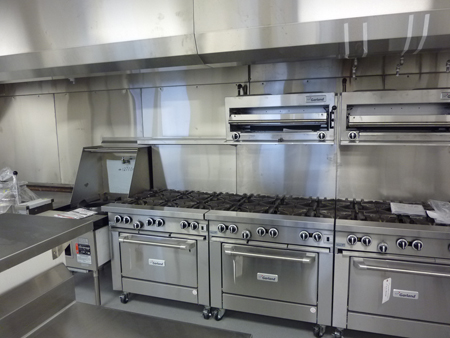 Anchorage, Alaska
Anchorage, Alaska
Designing for Redundancy and Maintenance
In addition to the need for durability, operators in these areas also need more redundancies. Similar to the double freezer setup, Agosti will also specify multiple cooking equipment pieces so that if one breaks down, there is plenty of backup.
The main reason for this: lack of service agents and longer travel times for those who are available. In some of the more remote locations, it can take days for a technician to be flown in to fix a broken cooler or other equipment, Agosti says. Not to mention it's expensive. Redundancy, combined with preventative maintenance, can help prevent the need to pay for rush or overtime technician fees.
 Alaska Technical Center Culinary Arts School in Kotzebue, AK.
Alaska Technical Center Culinary Arts School in Kotzebue, AK.
Lacking Labor
Aside from limited technicians, reliable and/or skilled labor can pose a challenge in remote locations. For this reason, reliable equipment is a must. But, Agosti says, operators also look for units with simpler controls.
"Combi ovens are great because you can perform multiple functions in one space, but the controls need to be kept simple," Agosti says. "This is where I have to strike a balance. I have to know that there are people available to use this unit or at least one person who can train others to use it."
Menu planning also has to be kept to a minimum. Many schools, in particular, run on a four-week cycle so they can forecast how much food they will need for the entire year, and they can use fewer ingredients in multiple ways.
Power Problems
Electricity outside the main cities in Alaska is extremely expensive, costing as much as 50 cents per kilowatt hour, Agosti explains.
As a result, many of his clients look to energy saving pieces that might cost more upfront but which will provide a return on investment much more quickly than in other parts of the country. While natural gas costs less than electricity, its distribution is limited throughout the state. Some remote locations in Alaska rely on diesel fuel to power generators, or they will fly in propane tanks, which is also pricey.
"My goal is to design more efficiently overall," says Agosti. "You try to minimize what you're doing when it comes to the energy consuming items. Instead of having an undercounter refrigerator at every station, there might be just one upright fridge. I also try to design shared work spaces around common items.
Designing for efficiency, energy savings, reliability and durability is nothing new for many consultants. In remote locations, however, this is not just desired — it's the norm.




